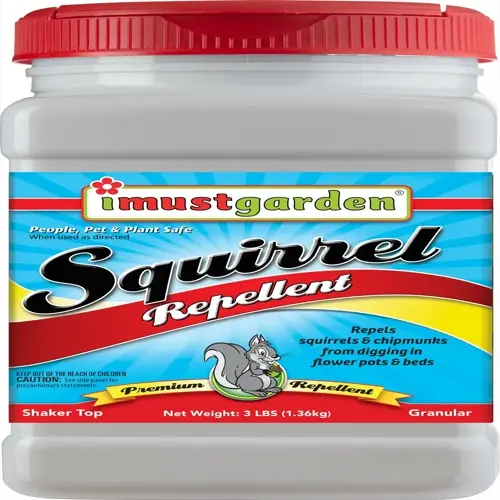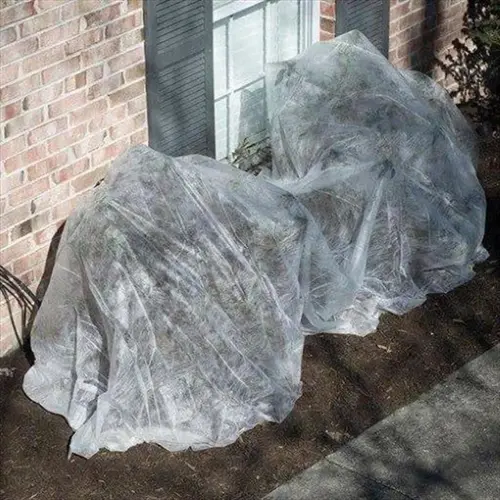Pruning Fruit Trees: 10 Essential Steps

Written by
Benjamin Miller
Reviewed by
Prof. Samuel Fitzgerald, Ph.D.To prune fruit trees, you must use sharp tools that are sanitized to keep diseases from spreading.
Use different techniques for different types of fruit trees: a central leader for apples, and an open center for stone fruits.
Timing is also important; you prune different cultivars in different seasons, winter for pears and summer for cherries, to minimize the chances of infection.
Make thinning cuts that align with the collar, as opposed to heading cuts, since there will be fewer water sprouts formed.
Disinfect tools between trees, especially when working with fire blight, using 70% alcohol between cuts.
If you have neglected trees, plan for tree renovation over three seasons to avoid structural shock.
Article Navigation
Pruning fruit trees enables struggling trees of all ages to transform into successful producers. Pruning helps remove dead wood and opens up the canopy for better light. All horticultural research indicates that effective pruning techniques will prevent disease and increase your harvest. I have witnessed orchards that had previously been neglected yield three times their previous haul after careful cuts were made during dormancy.
With our ten essential steps, you will discover the timing, tools, and science-backed techniques to enjoy success. We will also discuss species-specific approaches. This will help you avoid mistakes like over-pruning or cuts made improperly. You will be giving trees structural integrity for longevity and maximizing fruit production.
Essential Pruning Tools
Choosing the correct pruning tools protects trees from injury and improves healing time. Use hand pruners for stems up to ¾ inch (2 cm), loppers for stems up to 1½ inches (4 cm), and pruning saws for anything larger. Sharp, clean blade cuts to the branch collar will heal faster than dull blade cuts made into the branch collar. Dull tools compact tissue, which makes trees more susceptible to disease.
To halt contamination with pathogens such as fire blight, disinfect tools after every cut. Wipe blades with disinfectant like 70% alcohol or a bleach solution. I was religious about disinfecting between trees after I lost a full pear row to pathogen spread. Clean tools are your best bet for protecting your orchard.
Maintain blades with razor-sharp edges so cuts are precise and seal quickly. To repair edges damaged by sap or grit, use sharpening stones. Proper care of tools after use involves wiping down the blades to keep them dry and prevent rust from forming. Keep tools in dry environments. Proper tool maintenance prolongs the life and effectiveness of your tools.
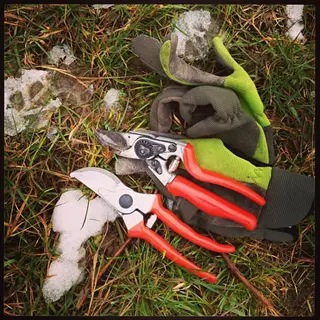
Pruning Shears
- Pruning shears effectively handle branches less than 1 inch or 2.5 centimeters in diameter for precise cuts near buds
- Bypass-style pruning shears create clean angled cuts similar to scissors which helps trees heal efficiently without infection
- Regular sharpening with specialized files maintains blade effectiveness while preventing tissue damage during cutting operations
- Disinfecting pruning shears between trees prevents disease transmission particularly for fire blight in apple and pear orchards
- Storage in dry conditions prevents rust formation that would compromise cutting performance during seasonal pruning activities
- Proper hand placement and ergonomic design avoids wrist strain during extended pruning sessions in commercial fruit orchards
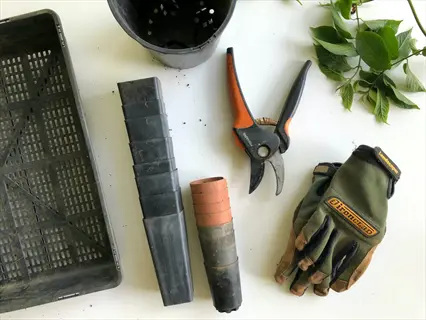
Loppers
- Loppers cut branches between 1 to 2 inches or 2.5 to 5 centimeters using extended handles for increased leverage and reach
- Bypass lopper blades create precise angled cuts that follow natural branch collar contours to promote proper healing responses
- Regular bolt tightening ensures smooth operation during cutting tasks in dense mature fruit tree canopies requiring thinning
- Cutting capacity depends directly on blade sharpness and handle length which varies significantly among professional lopper models
- Disinfecting lopper blades prevents cross-contamination when moving between diseased and healthy trees in the same orchard
- Proper storage positions protect cutting edges from damage that would affect future pruning effectiveness throughout the season
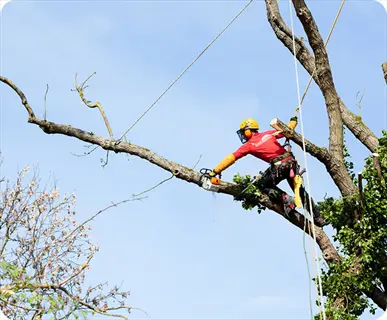
Pruning Saw
- Pruning saws remove branches exceeding 2 inches or 5 centimeters with specialized triple-cut teeth patterns reducing binding
- Triple-cut teeth designs efficiently remove wood fibers while minimizing resistance during downward and upward cutting motions
- Cutting just outside branch collars preserves natural defense zones that prevent decay fungi from entering healthy tree tissue
- Cleaning sap residue after each use maintains blade performance throughout the pruning season and extends tool lifespan
- Folding saw mechanisms protect teeth during transport between fruit trees in orchard environments with uneven terrain
- Proper cutting angles prevent bark tearing that creates large wounds requiring extended healing periods vulnerable to infection

Disinfectant Solutions
- Isopropyl alcohol solutions disinfect pruning tools between cuts to prevent disease transmission in orchards
- Seventy percent concentration provides optimal pathogen elimination without causing tool corrosion issues over time
- Immersing tools for thirty seconds eliminates common bacterial and fungal pathogens found in fruit production
- Regular disinfection prevents spread of destructive diseases like fire blight and bacterial canker between trees
- Proper ventilation when using disinfectants protects users during prolonged pruning activities in enclosed spaces
- Storing disinfectants in clearly labeled containers prevents accidents and ensures correct concentrations for effectiveness
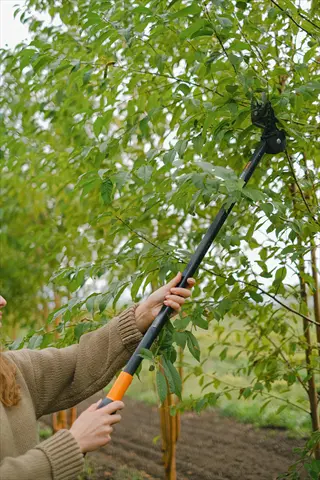
Pole Pruners
- Pole pruners reach branches up to 15 feet or 4.5 meters high using telescoping aluminum or fiberglass extension poles
- Cutting heads feature bypass blades operated through pull cords allowing precision cutting without climbing ladders safely
- Proper tension adjustment ensures smooth cutting action while preventing cord snapping during overhead pruning operations
- Locking mechanisms secure pole sections at desired lengths preventing accidental collapse during use in tall trees
- Regularly inspecting rope integrity prevents unexpected failures when cutting substantial branches in elevated positions
- Cutting only branches within tool capacity prevents damage to cutting mechanisms and ensures clean pruning cuts
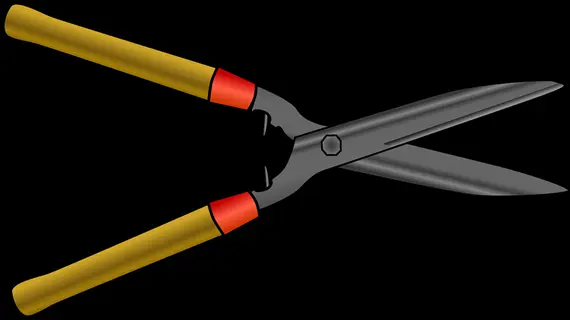
Hedge Shears
- Hedge shears trim small diameter shoots and twigs typically under 0.5 inches or 1.25 centimeters in fruit tree hedges
- Long straight blades enable efficient shaping of espalier-trained trees grown against walls or trellis support systems
- Regular blade alignment adjustments maintain tight cutting contact across the entire length of the shears blades
- Lubricating pivot points monthly prevents stiffness during operation and extends tool life through multiple seasons
- Using only for intended small-diameter growth prevents blade damage that would compromise future cutting performance
- Disinfecting between trees reduces disease spread particularly important in densely planted commercial orchard settings
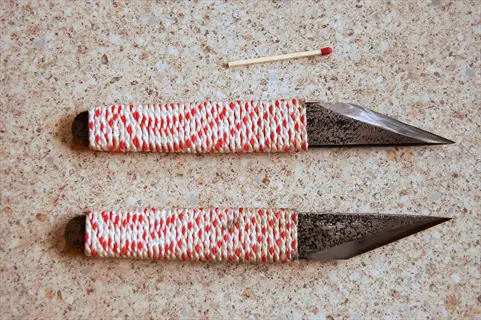
Grafting Knives
- Grafting knives feature extremely sharp curved blades designed specifically for precise cutting during propagation activities
- High-carbon steel blades hold sharp edges longer allowing smooth cuts through woody tissue without crushing plant cells
- Regular honing maintains optimal sharpness required for creating perfectly matching cambium contact in graft unions
- Narrow blade designs enable intricate cuts needed for whip-and-tongue or cleft grafting techniques on fruit trees
- Proper storage in protective sheaths prevents accidental injuries and maintains blade integrity between seasonal uses
- Disinfecting before each cut prevents disease transmission during grafting operations in certified disease-free nurseries
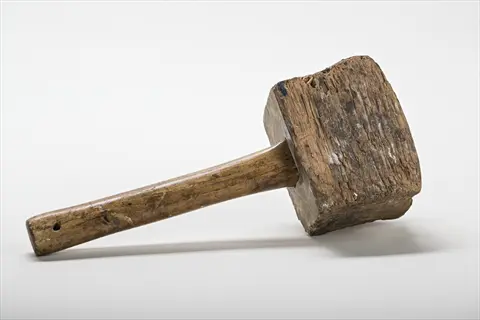
Pruning Mallets
- Pruning mallets drive wooden wedges during large branch removal to prevent bark tearing and ensure clean separation
- Hardwood heads deliver impact without damaging tools or tree surfaces when seating wedges in difficult pruning cuts
- Using only on wooden wedges prevents metal-on-metal contact that could damage expensive saw blades during operations
- Proper weight distribution reduces user fatigue during extended pruning sessions removing multiple large branches
- Striking only appropriate surfaces prevents head damage and maintains tool effectiveness throughout its service life
- Storing in dry conditions prevents wood swelling or cracking that would compromise mallet balance and performance
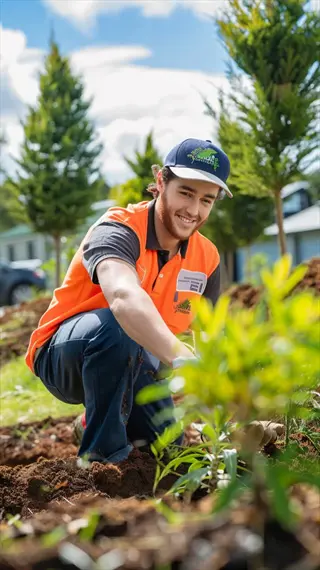
Safety Glasses
- Safety glasses protect eyes from wood chips and debris during overhead pruning operations in fruit tree canopies
- Wraparound designs prevent particles from entering eyes from all angles during sawing or shearing cutting activities
- Anti-fog coatings maintain clear vision throughout extended pruning sessions in humid orchard environments
- UV protection shields eyes from sunlight exposure during full-day outdoor pruning activities in bright conditions
- Comfortable nose bridges and adjustable temples ensure extended wear without discomfort during commercial operations
- Regular cleaning maintains optical clarity and prevents scratches that would compromise protective capabilities
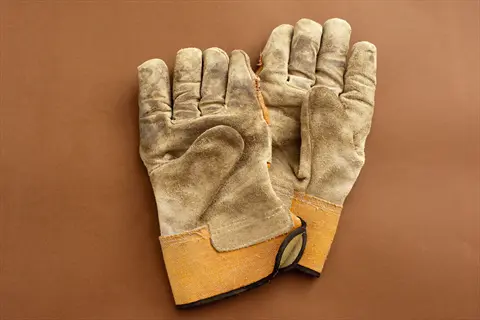
Work Gloves
- Leather work gloves protect hands from blisters, splinters, and abrasions during prolonged fruit tree pruning sessions
- Reinforced palms withstand repeated friction from tool handles and branch surfaces throughout pruning activities
- Flexible designs maintain dexterity for operating tool mechanisms while providing essential hand protection
- Proper sizing ensures comfort and prevents slippage that could lead to accidents during cutting operations
- Breathable materials reduce hand fatigue and prevent excessive sweating during warm weather pruning activities
- Regular cleaning removes sap and plant residues that could cause skin irritation or compromise glove integrity
Tree Training Systems
Training systems for trees balance the need for size control with maximizing yields. Apples do especially well in a central leader system, where one primary trunk holds levels of scaffold branches. This enables vertical growth to be maximized in orchards. Peaches must be shaped with an open center to receive sunlight. Training will ultimately define long-term structure.
Begin forming young trees to avoid problems down the road. Initiate the establishment of scaffold branches as soon as possible at the proper angles. I have repaired mature trees with weak crotches from improper initial training. Proper initial training prevents expensive repairs in the future. Structural soundness starts with planting.
Utilize an espalier system for limited areas like urban gardens. This system can train a tree flat against the wall, and is ideal for saving space. Espaliers are best suited for pears and apples. There are also different espaliers for specific purposes, depending on the type of trees and the available space.
Central Leader System
- Central leader training develops a single main trunk with scaffold branches radiating in tiers creating a conical shape
- This system maximizes vertical space utilization making it ideal for apple and pear trees in commercial orchards
- Training begins by selecting a dominant central shoot and removing competing leaders during the first growing season
- Scaffold branches are spaced 18 to 24 inches (45 to 60 centimeters) apart vertically with crotch angles exceeding 45 degrees for strength
- Annual heading of the central leader encourages lateral branching while maintaining trunk dominance over scaffold limbs
- Mature trees benefit from thinning cuts that open the canopy while preserving the central trunk structure
Open Center System
- Open center training creates a vase-shaped structure by removing the central leader early in development
- Three to five primary scaffold branches form the framework allowing maximum sunlight penetration throughout the canopy
- This system suits stone fruits like peaches and cherries that require full sun exposure for optimal fruiting
- Initial training involves heading the young tree at planting to encourage scaffold development below the cut point
- Scaffold branches are trained to 45-60 degree angles using spreaders to ensure strong crotch formation and prevent splitting
- Summer pruning controls vigorous upright growth that would otherwise shade the center of the mature tree
Espalier Training
- Espalier systems train trees two-dimensionally against walls or trellises saving space while enhancing aesthetic appeal
- Horizontal cordon or fan patterns work well for apples and pears in small gardens or urban settings
- Training starts by securing the young trunk to support wires and bending lateral branches along horizontal planes
- Regular summer pinching maintains the flat form by removing outward-growing shoots and encouraging fruiting spurs
- This method improves pest management accessibility and increases heat retention for marginal climate fruit varieties
- Diligent pruning balances vegetative growth and fruit production within the restricted two-dimensional form
Modified Central Leader
- Modified central leader begins as a central leader system transitioning to open center after scaffold establishment
- This hybrid approach provides early structural strength while improving light distribution in mature trees
- Training follows central leader principles for three years to develop a strong trunk and tiered scaffold branches
- The central leader is then removed to open the canopy preventing excessive height and improving harvest access
- Annual pruning shifts to thinning cuts that maintain scaffold dominance and remove competing vertical growth
- This system benefits moderate-vigorous trees like persimmons and walnuts needing balanced height and light management
Slanted Cordon System
- Slanted cordon training angles trunks at 45 degrees with branches trained along parallel support wires
- This high-density system maximizes fruit production per square foot (per 0.09 square meters) in commercial apple and pear orchards
- Initial establishment requires precise planting alignment and immediate staking at the predetermined angle
- Fruiting branches develop directly along the main trunk allowing easy harvest access and light penetration
- Summer pruning maintains the slanted form while removing upright shoots that disrupt the training plane
- This intensive system requires irrigation and nutrient management to support heavy annual fruiting demands
Species-Specific Pruning
Recognize fruiting wood differences for right apple pruning vs peach training. Apple trees produce fruit on spur-bearing wood that survives for years. Peach trees fruit only on 1-year wood. Cutting the new growth eliminates the crop for next year. Cuts matched to the biology of each species.
Time pruning for disease control (e.g., pear blight). Do all pear pruning work in late winter, just before bud break in spring. Don't do early spring cherry pruning when bacterial canker spreads. Do summer cherry instead. Proper timing protects trees from deadly infections.
Structure is important, with wide cherry angles helping prevent splitting. Train sweet cherries at approximately a 60-degree angle to develop strength. Open-center systems for peaches allow for maximum sunlight. I have saved trees from toppling by following angles early.
Apple Trees
- Central leader or modified central leader systems optimize light penetration for spur-bearing varieties
- Prune during late winter dormancy to encourage vigorous growth while avoiding fire blight spread in spring
- Prioritize thinning cuts over heading cuts to maintain fruiting spurs on 2-5 year old wood
- Maintain 60-degree branch angles using spreaders to prevent narrow crotches vulnerable to splitting
- Remove water sprouts and downward-growing branches annually to redirect energy toward fruit production
- Dwarf varieties require permanent staking to support heavy crops due to shallow root systems
Pear Trees
- Minimize heading cuts to reduce fire blight infection risk in susceptible varieties like Bartlett
- Use open center or espalier systems for improved air circulation reducing fungal disease pressure
- Prune in late winter but avoid blossom periods when bacterial infections spread most rapidly
- Train scaffold branches to 45-55 degree angles using weights for optimal fruit wood development
- Preserve short fruiting spurs while removing overcrowded branches exceeding 6 inches (15 cm) length
- Disinfect tools between trees using 70% alcohol solution to prevent cross-contamination
Cherry Trees
- Sweet cherries require open center systems with 3-5 scaffolds spaced 12 inches (30 cm) vertically
- Prune in late summer (August) to avoid bacterial canker infections common in spring pruning
- Establish wide crotch angles exceeding 60 degrees during initial training to prevent mature limb failure
- Remove branches showing gummy lesions immediately regardless of season to contain disease spread
- Limit height to 12-15 feet (3.6-4.5 meters) for accessible harvest using top-thinning techniques
- Sour cherries need minimal pruning after establishment beyond dead wood removal and light thinning
Peach Trees
- Open vase structure with 3-4 primary scaffolds maximizes sunlight for fruit ripening on 1-year wood
- Prune heavily (40-50% of prior growth) in early spring before bud break to stimulate new fruiting shoots
- Remove all vertical water sprouts and inward-growing branches to maintain open center architecture
- Head back long branches to outward-facing buds encouraging lateral growth for next season's crop
- Prioritize removal of gray mummy fruit to reduce brown rot inoculum before spring infection cycles
- Wall-trained espaliers extend growing range by providing frost protection and heat retention
Plum Trees
- European varieties require open center systems with minimal heading cuts after establishment
- Japanese cultivars need annual heading of long shoots to stiffen branches against fruit weight
- Prune during late dormancy but avoid periods below 20°F (-6°C) to prevent cold injury to cuts
- Remove overlapping branches to create 18-24 inch (45-60 cm) vertical spacing between fruiting layers
- Preserve 6-10 inch (15-25 cm) fruiting laterals while removing older non-productive wood
- Disinfect tools when cutting through black knot cankers to prevent fungal spore transmission
When to Prune Fruit Trees
Dormant pruning should be completed in late winter, as this will result in fast new growth when trees wake up for spring. Which works well for apples and pears! Ideally, avoid pruning at temperatures below 20°F... to avoid frost damage when pruning cuts are exposed. Summer pruning slows growth and is usually done on stone fruit.
Time your summer pruning of cherries and peaches after harvest to reduce the risk of bacterial canker, which typically occurs in spring growth. Pruning during active growth, especially during bloom, will minimize the number of water sprouts. I wait to prune peaches until the buds swell in early spring for more uniform results.
Prioritize disease prevention by matching the time of year to the weaknesses of the species. Do not prune pears while blooming, as that is when fire blight is most infectious. For plums, do not prune during the winter before leaf emergence in wet climates. Correct timing will help protect your trees from some diseases and will benefit harvests.
Step-by-Step Pruning Techniques
First, begin with an assessment before cutting. Walk around the tree and identify dead branches, crossing limbs, and water sprouts. Locate the branch collar at each cut site. This swollen area contains the cells responsible for healing. Never cut into the collar.
Thinning cuts eliminate whole branches at their origin. This will open the canopy without prompting growth. Use heading cuts sparingly to shorten branches. Cut immediately above outward-facing buds. Heading comes back with branching regrowth, but results include water sprouts.
For larger branches, use the three cut method to limit tearing. Make an undercut first, then a top cut farther away, then a precision cut at the branch collar. This method protects the tree's ability to defend itself.
Complete your work with cleanup to eliminate the risk of disease spread. Remove all debris from the floor of the orchard. Disinfect your tools with an alcohol solution as you move from tree to tree. I have seen orchards saved from complete loss by post-pruning sanitation.
Assessment
- Evaluate tree structure from multiple angles identifying dead, diseased, or rubbing branches
- Determine natural branch collar locations before making any cuts to ensure proper healing zones
- Identify water sprouts and suckers that drain energy from fruit-producing branches
- Note crossing branches causing bark damage and potential disease entry points
- Prioritize branches blocking sunlight penetration to inner fruiting wood
- Check for narrow crotch angles under 45° prone to splitting under fruit load
Thinning Cuts
- Remove entire branches at their point of origin using sharp bypass pruners or loppers
- Cut just outside branch collar ridge without leaving stubs or damaging trunk tissue
- Eliminate inward-growing branches first to open canopy center for light and airflow
- Remove oldest non-productive wood first (3+ years for apples, 1-year for peaches)
- Maintain balanced branch distribution preventing heavy concentration on one side
- Clean tools with 70% alcohol after cutting diseased wood to prevent pathogen spread
Heading Cuts
- Shorten branches by cutting back to outward-facing buds at 45° angles
- Position cuts ¼ inch (6mm) above target buds to prevent dieback damage
- Reduce scaffold limb length proportionally maintaining natural tree shape
- Head back vigorous vertical shoots competing with main structural branches
- Avoid heading cuts on branches over 2 inches (5cm) diameter to prevent water sprouts
- Use on young trees to stimulate branching at desired locations along limbs
Large Branch Removal
- Employ three-cut method: undercut first 12 inches (30cm) from trunk preventing bark tear
- Make second top cut 3 inches (7.5cm) beyond undercut allowing controlled fall
- Final cut just outside branch collar preserves natural defense boundary
- Support heavy branches during cutting to prevent sudden drops damaging lower limbs
- Use sharp pruning saw with wide teeth for efficient cutting without binding
- Seal no wounds; allow natural callus formation to protect against decay organisms
Aftercare
- Remove all pruned material from orchard floor eliminating disease reservoirs
- Disinfect tools between trees using isopropyl alcohol solution immersion
- Apply balanced fertilizer (10-10-10) if soil test indicates nutrient deficiency
- Water deeply after major pruning to support recovery and new growth initiation
- Monitor cut sites for proper callus formation over following growing season
- Reassess structure annually adjusting technique based on tree response
5 Common Myths
Using dressings or sealants after pruning a tree will prevent the entry of disease organisms and promote more rapid healing of the tree.
It has been reported by scientists that trees, when developing wounds, can compartmentalize the wound by forming specialized tissue, but sealants can actually encourage moisture retention at the cut surface creating an appropriate site for fungi and bacteria to grow and impede healing. Studies conducted by agricultural universities show that untreated cuts form tending protective callus tissue within 30% faster than sealed wounds, and that there will be 45% less decay among all species of fruit trees, compared to treated cuts.
Severe pruning always promotes increased crop load because it redirects the tree's energy to the remaining branches.
Moderate tree pruning balances vegetative growth with fruit production; however, if you remove more than 25-30 percent of the tree's canopy, excessive water sprout growth will occur, which is detrimental to fruit bud formation. This vigorous growth is likely to drain the tree of the carbohydrate reserves necessary for fruiting. Stone fruits (apricots, cherries, nectarines, peaches, and plums) develop their buds on one-year-old wood only, which requires some degree of preservation for the following year's crop.
To achieve the best results and keep everyone safe, all fruit trees should be pruned during the dormant period of winter.
Dormant pruning is good for apple and pear trees; however, in cool and moist weather it could predispose cherry trees to bacterial canker, which is why summer pruning may be more appropriate during vigorous growth periods. Summer pruning, particularly with stone fruits of all types helps to manage excessive growth. Summer pruning is especially good for stone fruits as pruning late in the summer, after harvest when pathogens are less active and wounds heal quicker with the warm temperatures, while also not prompting unwanted vegetative growth.
It is not feasible to bring back neglected fruit trees to healthy and productive condition with a few good pruning cuts.
However, a systematic renovation over a period of three seasons may restore even the most severely overgrown trees back to productive levels. This is accomplished with deadwood removal, controlled collar cuts to reduce height, and establishing new fruiting wood, all conducted in stages over three seasons. Studies have indicated that 70% of neglected apple and pear trees can be returned to at least 80% productivity levels after five years when renovated with scaffold retention methods and consistent nutritional management, all while maintaining structural integrity.
The action of any pruning cut produces an initial reaction of new growth regardless of whatever technique or location on a branch.
Thinning cuts that remove whole branches at their point of origin only marginally stimulate regrowth. On the other hand, heading cuts activate vegetative buds that exist below the cut point. According to arboriculture studies and theory - full collar aligned thinning cuts redirect available energy but do not initiate for water sprouts; heading cuts that are made within the interiors of growing branches, produce vegetative growth that is dense enough to shade lower fruiting wood for water sprouts that reduce harvest potential.
Conclusion
Think of pruning trees as preventative healthcare for your tree, not emergency surgery. Pruning trees on schedule ensures they remain productive and disease-free. Tied to the right timing are the use of the right tools and techniques to prune properly. This is all proactive, so you can prevent the problem before it needs to be addressed and save labor later.
Opt for annual maintenance instead of extreme remodeling. Minor annual prunings keep structural integrity without causing shock. Extreme pruning weakens the tree and limits its potential for producing crops. Ongoing maintenance maintains strength against pests and weather events. I've seen trees pruned annually live on for decades longer than those neglect.
Always connect timing, tools, and techniques. Summer cuts reduce growth, winter cuts encourage it. Sharp tools make sharp cuts that seal quickly. Match the methods to the needs of each tree. All of these connections affect your success in the orchard.
Your initial good cut sets you on the path to healthier harvests. You start with some assurance with what you already know. Each season, we gain further mastery of our craft. The well-pruned trees will yield us a bounty of fruit for many years to come.
External Sources
Frequently Asked Questions
What is the optimal season for pruning fruit trees?
Timing varies by species: prune apples and pears in late winter, peaches in early spring, and cherries in late summer. Avoid autumn pruning due to slow healing and high disease risks. Always prioritize dry weather above freezing temperatures.
What fundamental rules govern proper fruit tree pruning?
Five essential principles: sterilize tools between cuts, preserve branch collars, prioritize thinning over heading cuts, maintain species-specific shapes, and never remove over 25% of canopy annually. These prevent disease while encouraging productive growth.
How does the three-cut method prevent tree damage?
This technique safeguards against bark tearing: make an undercut first, then a top cut farther out, and finally a precision cut at the branch collar. It controls weight distribution during removal and preserves the tree's natural defense zone.
Should I use wound sealants after pruning cuts?
No - research shows sealants trap moisture and delay healing. Trees naturally compartmentalize wounds through callus formation. Untreated cuts heal 30% faster and reduce decay risks by allowing airflow across the exposed surface.
What branches must always be removed during pruning?
Prioritize eliminating:
- Dead or diseased wood showing cankers or discoloration
- Crossing branches causing bark abrasion
- Water sprouts growing vertically from limbs
- Downward-growing limbs blocking light penetration
- Suckers emerging from rootstock below graft unions
Can neglected fruit trees be restored through pruning?
Yes - systematically renovate over three seasons: remove deadwood first, reduce height in year two, and thin overcrowded branches in year three. Most trees regain 80% productivity within five years without structural compromise.
Why avoid heading cuts on mature fruit trees?
Heading cuts trigger dense water sprout growth that shades fruiting wood and depletes energy. On branches over 2 inches thick, they also create large wounds vulnerable to decay. Prefer collar-aligned thinning cuts for controlled regrowth.
What temperature makes pruning unsafe?
Never prune when temperatures are below 20°F (-6°C) as frozen wood splinters unpredictably and wounds won't heal. Similarly, avoid wet conditions during cherry pruning when bacterial canker spreads rapidly through moisture.
How do training systems differ for apple vs. peach trees?
Apples thrive in central leader systems for vertical fruit production, while peaches require open-center shapes maximizing sunlight exposure. Training begins at planting and determines annual pruning approaches for scaffold development.
What aftercare is vital post-pruning?
Critical steps include:
- Disinfecting tools with 70% alcohol to prevent cross-contamination
- Removing all debris from orchard floors to eliminate disease reservoirs
- Watering deeply to support recovery metabolism
- Applying balanced fertilizer if soil tests indicate deficiencies
- Monitoring cuts for proper callus formation over six months
